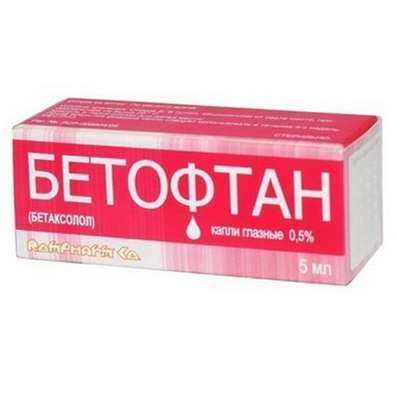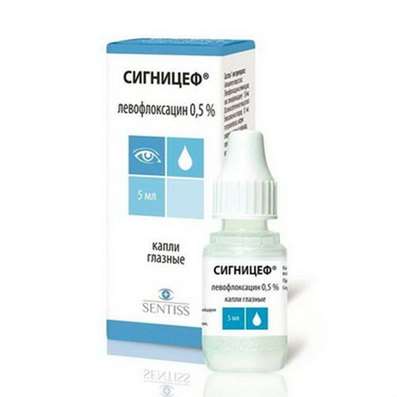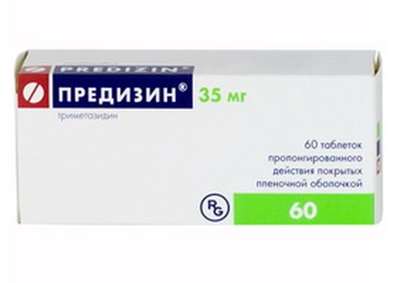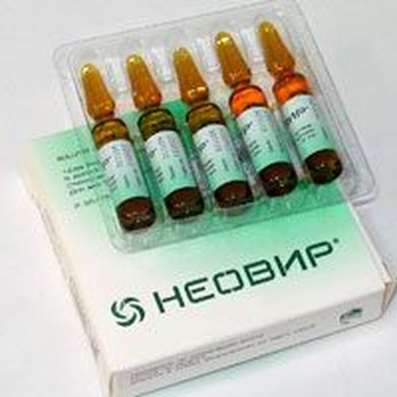Instruction for use: Caffeine + Metamizole sodium + Phenobarbital (Cîffeinum + Metamizolum natrium + Phenobarbitalum)
I want this, give me price
Pharmacological groups
NSAIDs - Pyrazolones in combinations
Nosological classification (ICD-10)
J06 Acute upper respiratory infections of multiple and unspecified
Frequent colds viral diseases, Infections of the upper respiratory tract, Acute respiratory disease influenza character, for colds Pain, Acute colds,Cold, respiratory infection,Seasonal colds, Pain in infectious and inflammatory diseases of the upper respiratory tract, Bacterial infections of the upper respiratory tract, Bacterial respiratory infections, Viral disease of the respiratory tract, Viral respiratory tract infections, Inflammatory disease of the upper respiratory tract, Inflammation of the upper respiratory tract disease, Inflammation of the upper respiratory tract illness with difficult sputum, Inflammatory airway disease, Secondary infections with colds, Shortness of sputum in acute and chronic respiratory diseases, Upper respiratory tract infection, Infections of the upper respiratory tract, Respiratory Tract Infections, Infections of the respiratory tract and lungs, Infectious-inflammatory diseases of the upper respiratory tract, Infectious-inflammatory diseases of the upper respiratory tract and ENT-organs, Infectious-inflammatory diseases of the upper respiratory tract in children and adults, Infectious-inflammatory diseases of the upper respiratory tract, Infectious inflammation of the airways,respiratory infection, Qatar upper respiratory tract, Catarrh of the upper respiratory tract, Catarrhal disease of the upper respiratory tract, Catarrhal symptoms of the upper respiratory tract, Coughing with a cold, SARS, ARI, ARI with rhinitis phenomena, Acute respiratory infection, Acute infectious and inflammatory disease of the upper respiratory tract, Acute respiratory disease, Sore throat or nose, Respiratory viral infections, Respiratory diseases, Respiratory infections, Recurrent respiratory infections, Secondary infection with influenza, cold in the chest, Feverish condition with flu usitis, acute sinusitis, genyantritis, purulent sinusitis
K08.8.0 * Painful toothache
Dentinal pain, Dentinal pains, Pain pulpitis, Anesthesia in dentistry, Pain syndromes in dental practice, Pain after removal of tartar, Pain when extracting a tooth, Toothache, Pain after dental interventions
M25.5 Pain in the joint
Arthralgia, Pain syndrome in musculo-articular diseases, Pain syndrome in osteoarthritis, Pain syndrome in osteoarthritis, Pain syndrome in acute inflammatory diseases of the musculoskeletal system, Pain syndrome in chronic inflammatory diseases of the musculoskeletal system, Pain in the joints, Soreness of the joints, Soreness of joints in severe physical exertion, Painful inflammatory joint damage, Painful conditions of the musculoskeletal system, Painful joint conditions, Painful traumatic affection of joints, Pain in the musculoskeletal system, Pain in Shoulder Joints, Pain in the joints, Joint pain, Joint pain with injuries, Musculoskeletal pain, Pain with osteoarthritis, Pain in the pathology of the joints, Pain in rheumatoid arthritis, Pain in chronic degenerative bone diseases, Pain in chronic degenerative joint diseases, Bone-joint pain, Joint pain, Arthritic pain of rheumatic origin, Articular pain syndrome, Joint pain, Rheumatic pain, Rheumatic pains
M54.1 Radiculopathy
Acute sciatica, Radiculopathy, Radiculitis, Radiculitis with radicular syndrome, Acute radiculopathy, Pain syndrome with radiculitis, Subacute radiculitis, Radiculitis, Chronic radiculitis, Diseases of the spinal column
M54.5 Pain below the back
Pain in the lower back, Lumbar pain, Lumbalia, Painful conditions of the spinal column, Back pain, Lower Back Pain Syndrome
M79.1 Myalgia
Myofascial pain syndromes ,Pain syndrome in musculo-articular diseases, Pain syndrome in chronic inflammatory diseases of the musculoskeletal system, Pain in the muscles, Tenderness of muscles, Muscular soreness in severe physical exertion, Painful conditions of the musculoskeletal system, Pain in the musculoskeletal system, Pain in the muscles, Pain at rest, Muscle aches, Muscle pain, Musculoskeletal pain, Myalgia, Muscle pain, Muscle pain at rest, Muscle pain, Muscular pain of non-rheumatic origin, Muscle pain of rheumatic origin, Acute muscle pain, Rheumatic pain, Rheumatic pains, Myofascial syndrome, Fibromyalgia
M79.2 Neurology and neuritis, unspecified
Pain syndrome with neuralgia, Brachialgia, Occipital and intercostal neuralgia, Neuralgia, Neuralgic pain, Neuralgia, Neuralgia of intercostal nerves,Neuralgia of the posterior tibial nerve, Neuritis, Neuritis traumatic, Neuritis, Neurological Pain Syndromes, Neurological contractures with spasms, Acute neuritis, Peripheral neuritis,Post-traumatic neuralgia,Severe pain of a neurogenic nature, Chronic neuritis, Essential neuralgia
N94.6 Dysmenorrhea Unspecified
Pain during menstruation, Functional disorders of the menstrual cycle, Menstrual cramps, Emmeniopathy, Pain during menstruation, Painful menstrual irregularities, algomenorrhea, algomenoreya, Pain smooth muscle spasm, Pain spasm of smooth muscles (renal and biliary colic, intestinal spasms, dysmenorrhea), Pain spasm of smooth muscles of internal organs (kidney and biliary colic, intestinal spasms, dysmenorrhea), Disalgomenoreya, dysmenorrhea, Dysmenorrhea (essential) (Exfoliative), menstrual disorder, menstruation painful, metrorrhagia, Violation of the menstrual cycle, Menstrual irregularities, Prolaktinzavisimoe menstrual disorders, Prolaktinzavisimoe menstrual dysfunction, Pain spasm of smooth muscles of internal organs, Spasmodic dysmenorrhea, Primary disalgomenoreya
R50.0 Fever with chills
High fever, Heat, Chills, elevated temperature, hyperthermia, Prolonged fever, Feverish syndrome, Fervescence, Increased body temperature in infectious and inflammatory diseases, fever Symptoms, febrile syndrome, Febrile state, Fever, Fever in infectious and inflammatory diseases, Fever with SARS, Fever with cold, Fever for colds, febrility, Feverish condition with flu, Feverish state in infectious and inflammatory diseases , Feverish state of infectious diseases and in the postoperative period, Feverish condition for colds, Febrile of different genesis, Feverish syndrome on the background of infectious diseases, Feverish syndrome in infectious and inflammatory diseases, Feverish syndrome with colds, Feverish syndrome of different genesis, Increased temperature for colds, Increased temperature at catarrhal and infectious and inflammatory diseases, Increased body temperature in cold, etc., Increased body temperature in cold and other infectious and inflammatory diseases, Increased body temperature in cold and other infectious and inflammatory diseases, Fever during pregnancy, Fever with thrombocytopenia, Febrile reaction in blood transfusion
R51 Headache
Pain in the head, Cephalgia, Pain with sinusitis, Pain in the back of the head, Painful headache, Headache of vasomotor genesis, Headache of vasomotor origin, Headache with vasomotor disorders, Headache, Neurological headache, Serial headache
R52.9 Unspecified Pain
Pain after cholecystectomy, Pain shooting, Non-malignant pain, Obstetric and gynecological pain, Pain syndrome, Pain in the postoperative period, Pain in the postoperative period after orthopedic surgery, Pain of inflammatory genesis, Pain than cancer genesis, Pain syndrome after diagnostic procedures, Pain after surgery Diagnostic, Pain after surgery, Pain after orthopedic surgery, Pain after injuries, Pain after the removal of hemorrhoids, Pain at the non-rheumatic inflammation of nature, Pain in inflammatory lesions of the peripheral nervous system, Pain in diabetic neuropathy, Pain in acute inflammatory diseases of the musculoskeletal system, Pain when the tendon pathology, Pain smooth muscle spasm, Pain spasm of smooth muscles (renal and biliary colic, intestinal spasms, dysmenorrhea), Pain spasm of smooth muscles of internal organs, Pain spasm of smooth muscles of internal organs (kidney and biliary colic, intestinal spasms, dysmenorrhea), Pain in trauma syndrome, Pain with injuries and after surgical interventions, Pain in chronic inflammatory diseases of the musculoskeletal system, Pain with duodenal ulcer, Pain syndrome in gastric ulcer, Pain syndrome in gastric ulcer and duodenal ulcer, pain, Pain during menstruation, pain syndromes, painful condition, Painful foot fatigue, Sore gums when wearing dentures, Soreness of the cranial nerves exit points, Painful menstrual irregularities, Painful dressings, Painful muscle spasm, Painful teeth growth, Melosalgia, Pain in the area of the surgical wound, Pain in the postoperative period, Pain in the body, Pain after diagnostic procedures, Pain after orthopedic surgery, Pain after surgery, The pains of the flu, Pain in diabetic polyneuropathy, Pain for burns, Pain during sexual intercourse, Pain during diagnostic procedures, Pain during therapeutic procedures, for colds Pain, Pain in sinusitis, Pain in trauma, Pain traumatic, The pain in the postoperative period, Pain after diagnostic procedures, The pain after sclerotherapy, Pain after surgery, postoperative Pain, Pain postoperative and posttraumatic, posttraumatic pain, Pain when swallowing, Pain in infectious and inflammatory diseases of the upper respiratory tract, The pain of burns, The pain in traumatic muscle injury, Pain in trauma, The pain of tooth extraction, The pain of traumatic origin, Pain caused by spasm of smooth muscles, Expressed pain syndrome, Expressed pain syndrome, traumatic origin, Postoperative pain, Post-traumatic pain, Post-traumatic pain syndrome, Torpid pain, Traumatic pain, Traumatic pain, Mild pain, Moderately severe pain, Moderate pain, Polyarthralgia with polymyositis
Characteristics of Caffeine + Metamizol sodium + Phenobarbital
Analgesic combination (psychostimulant + NPVS (non-steroidal anti-inflammatory drugs) + barbiturate).
Pharmacology
Pharmacological action - antipyretic, analgesic.
Pharmacodynamics
Has analgesic and antipyretic effect. The analgesic effect develops in 20-30 minutes and reaches a maximum after 45 minutes. Pharmacological properties are due to the action of the components that make up the combination.
Metamizole sodium is a derivative of pyrazolone, which has analgesic, antipyretic and antispasmodic effect. The mechanism of action is not fully understood. According to the results of the research, metamizole and its active metabolite (4N-methylaminoantipyrine) have a central and peripheral mechanism of action. Non-selectively inhibits COX (cyclooxygenase) and reduces the formation of PG (prostaglandins) from arachidonic acid.
Phenobarbital belongs to the barbiturate group. Interacts with the barbiturate site of benzodiazepine-GABA (gamma-aminobutyric acid) -receptor complex, which increases the sensitivity of GABA receptors to GABA, leads to the opening of the chloride channels, which increases the flow of chloride ions into the cell and leads to hyperpolarization. Suppresses the sensory areas of the cerebral cortex, reduces motor activity, depresses the cerebral function, incl. respiratory center. Has no significant effect on CAS (cardiovascular system). Reduces the tone of smooth muscles of the digestive tract (gastrointestinal tract). In small doses, it exhibits a sedative effect.
Caffeine increases the reflex excitability of the spinal cord, excites the respiratory and vasomotor centers, dilates the blood vessels of skeletal muscles, brain, heart, kidneys, reduces platelet aggregation; reduces drowsiness, a feeling of fatigue, increases mental and physical performance. In this combination, caffeine in a small dose practically does not have a stimulating effect on the central nervous system, but it increases the tone of the vessels of the brain and helps to accelerate blood flow.
Pharmacokinetics
Metamizol sodium
After oral administration, metamizole sodium is hydrolyzed to pharmacologically active 4N-methylaminoantipyrine (MAA). Bioavailability of MAA after oral administration is 90%, which is somewhat higher than with parenteral administration. Simultaneous food intake does not have a significant effect on the pharmacokinetics of metamizole sodium. Clinical efficacy is determined predominantly by MAA, and also to a lesser extent by 4N-aminoantipyrine (AA) metabolites. The AUC value (the area under the concentration-time curve) for AA is 25% of this value for the MAA.
Metabolites 4N-acetylaminoantipyrine (AAA) and 4N-formylaminoantipyrine (FAA) do not have pharmacological activity.
All metabolites are characterized by non-linear pharmacokinetics. The clinical significance of this phenomenon is unknown. In the short term, cumulation of metabolites does not play a big role.
Metamizole sodium penetrates the placenta. Metabolites metamizole penetrate into breast milk.
The connection with plasma proteins MAA is 58%, AA - 48%, FAA - 18% and AAA - 14%. After a single oral intake, 85% of the dose is detected in the urine as metabolites, of which (3 ± 1)% - MAA, (6 ± 3)% - AA, (26 ± 8)% - AAA and (23 ± 4)% - FAA. Renal clearance after a single intake of 1 g of metamizole sodium inside for MAA is equal to (5 ± 2) ml / min, AA - (38 ± 13) ml / min, AAA - (61 ± 8) ml / min and FAA - (49 ± 5 ) ml / min. The corresponding T1 / 2 from the plasma for the MAA are (2.7 ± 0.5) h, AA - (3.7 ± 1.3) h, AAA - (9.5 ± 1.5) h and FAA - (11 , 2 ± 1.5) h.
Elderly patients. In elderly patients, the AUC rises by 2-3 times. In patients with cirrhosis of the liver, T1 / 2 MAA and FAA in a single dose increase approximately 3-fold, whereas T1 / 2 AA and AAA do not follow the same pattern. Such patients should avoid the use of high doses.
Impaired renal function. According to available data, with renal failure, the rate of elimination of certain metabolites (AAA and FAA) is reduced. Such patients should avoid the use of high doses.
Bioavailability. According to the clinical study, pharmacokinetic parameters of MAA when ingested 1 g of metamizole sodium have the following values (average values and standard deviations are given): Cmax is (17.3 ± 7.54) mg / l; Tmax - (1.42 ± 0.54) h; AUC - (80.9 ± 34.1) mg · h / l. Absolute bioavailability of MAA by AUC for oral administration is 93%.
Phenobarbital
When ingested completely, but relatively slowly absorbed. Plasma Cmax is observed 1-2 hours after administration.
About 50% binds to plasma proteins. Evenly distributed in different organs and tissues; smaller concentrations are found in the brain tissues. Well penetrates into breast milk and through the placental barrier.
Metabolized in the liver, induces microsomal liver enzymes CYP3A4, CYP3A5, CYP3A7 (the rate of enzymatic reactions increases 10-12 times), increases the detoxification function of the liver. Cumulates in the body. T1 / 2 is 2-4 days.
It is excreted by the kidneys in the form of glucuronide, 25% - unchanged.
Caffeine
When ingested absorption is good, occurs throughout the intestine. Tmax - 50-75 minutes after ingestion, Cmax - 1,6-1,8 mg / l. Quickly distributed in all organs and tissues of the body; easily penetrates the GEB and the placenta. Vd in adults - 0,4-0,6 l / kg, in newborns - 0,78-0,92 l / kg. The connection with blood proteins (albumin) is 25-36%. More than 90% is metabolized in the liver, in children of the first years of life - up to 10-15%. In adults, about 80% of the dose of caffeine is metabolized to paraxanthin, about 10% to theobromine and about 4% to theophylline. These compounds are subsequently demethylated into monomethylxanthines, and then into methylated uric acids. T1 / 2 in adults - 3.9-5.3 hours (sometimes up to 10 hours). The excretion of caffeine and its metabolites is carried out by the kidneys (in unchanged form in adults it is deduced 1-2%).
Application of Caffeine + Metamizol sodium + Phenobarbital
Pain syndrome of different genesis: headache, toothache, pain in muscles and joints, with painful menstruation, with radiculitis, neuralgia. As a symptomatic means to reduce high fever and ease the symptoms of malaise (headache, aches) with colds.
Contraindications
Hypersensitivity to metamizole sodium and other pyrazolone derivatives, as well as to pyrazolidines, for example phenylbutazone (including patients who undergone agranulocytosis due to the use of these drugs), caffeine, phenobarbital; analgesic bronchial asthma or intolerance to analgesics (type of urticaria - angioedema), i.e. patients with bronchospasm or other forms of anaphylactoid reactions (eg urticaria, rhinitis, angioedema) in response to the use of salicylates, paracetamol or NSAIDs such as diclofenac, ibuprofen, indomethacin or naproxen; violation of bone marrow hematopoiesis (for example after cytostatic therapy) or diseases of the hematopoietic organs; hereditary deficiency of glucose-6-phosphate dehydrogenase (hemolysis); acute intermittent hepatic porphyria (risk of developing porphyria attacks); severe liver and / or kidney disease; Respiratory diseases accompanied by shortness of breath or airway obstruction; myasthenia gravis; alcohol intoxication, drug or drug dependence, incl. in the anamnesis; pregnancy and the period of breastfeeding; children's age till 18 years.
Restrictions for use
Impaired liver and / or kidney function; peptic ulcer of the stomach and duodenum in remission; glaucoma; increased excitability; elderly age; epilepsy and a tendency to convulsive seizures.
pregnancy and lactation
The combination of caffeine + metamizole sodium + phenobarbital is contraindicated for use in pregnancy.
If it is necessary to use during the lactation period, it is necessary to resolve the issue of stopping breastfeeding.
Side effects of Caffeine + Metamizol sodium + Phenobarbital
To date, no side effects have been reported with a combination of caffeine + metamizole sodium + phenobarbital. The frequency of occurrence of the following possible side effects is unknown. When used in accordance with the instructions, the occurrence of the following side effects is unlikely.
From the side of the immune system: angioedema, anaphylactoid and anaphylactic reactions.
On the part of the organs of hematopoiesis: agranulocytosis, leukopenia, thrombocytopenia, anelastic anemia, pancytopenia.
On the part of the nervous system: psychomotor agitation, anxiety, tremor, anxiety, dizziness, epileptic seizures, increased reflexes, insomnia; paradoxical reaction in the elderly (unusual stimulation), increased fatigue, drowsiness, decreased speed of psychomotor reactions, drug dependence.
From the CCC: a feeling of palpitation, tachycardia, increased blood pressure, lowering blood pressure.
From the respiratory system, chest and mediastinum: tachypnea, bronchospastic syndrome, analgesic bronchial asthma.
On the part of the digestive system: nausea, vomiting, exacerbation of peptic ulcer, constipation.
From the skin and subcutaneous tissues: rash (including persistent), itching, urticaria.
Interaction
Metamizol sodium
Enhances the effects of ethanol.
It is not recommended to simultaneously use radiocontrast drugs, colloidal blood substitutes and penicillin.
With the simultaneous use of cyclosporine, the concentration of the latter in the blood decreases, so when they are used simultaneously, the concentration of cyclosporin should be monitored.
Metamizole sodium increases the activity of oral hypoglycemic drugs, indirect anticoagulants, GCS and indomethacin.
Phenylbutazone, barbiturates and other inducers of microsomal liver enzymes with simultaneous use reduce the effectiveness of metamizole sodium.
Simultaneous use with other non-narcotic analgesics, tricyclic antidepressants, contraceptive hormonal drugs and allopurinol may lead to an increase in their toxicity.
Sedative and anxiolytic drugs (tranquilizers) increase the analgesic effect of metamizole sodium.
Thiamazole and cytostatics increase the risk of developing leukopenia.
The effect is enhanced by codeine, H2-histamine receptor blockers and propranolol (slows inactivation).
Myelotoxic drugs increase the manifestation of hematoxicity of the drug. The simultaneous use of metamizole sodium and methotrexate may increase the hematotoxicity of the latter, especially in elderly patients.
With the simultaneous use of metamizole sodium and chlorpromazine may develop severe hypothermia.
Phenobarbital
Interaction with other drugs is due mainly to the ability of phenobarbital to induce cytochrome P450 (mainly isoenzyme CYP3A4).
Reduces antibacterial activity of antibiotics and sulfonamides, antifungal activity of griseofulvin.
Reduces the effectiveness of indirect anticoagulants, GCS, estrogens and other drugs metabolized by microsomal enzymes of the liver. Oppression of the central nervous system decreases with simultaneous use of atropine, belladonna extract, dextrose, thiamine, nicotinic acid, analeptics and psychostimulants.
Acetazolamide, alkalinizing urine, reduces the reabsorption of phenobarbital in the kidneys and weakens its effect.
Strengthens the effect of alcohol, neuroleptics, narcotic analgesics, muscle relaxants, sedatives and hypnotics.
Caffeine
Caffeine is an antagonist of adenosine. With the joint use of caffeine and barbiturates, primidone, anticonvulsant drugs (hydantoin derivative, especially phenytoin), it is possible to increase metabolism and increase caffeine clearance; cimetidine, oral contraceptives, disulfiram, ciprofloxacin, norfloxacin - a decrease in the metabolism of caffeine in the liver (slowing its elimination and increasing blood concentrations). Caffeine-containing drinks and other drugs that stimulate the central nervous system, - excessive stimulation of the central nervous system is possible. Mexiletine reduces caffeine withdrawal by 50%; nicotine - increases the rate of caffeine withdrawal. MAO inhibitors, furazolidone, procarbazine and selegiline - large doses of caffeine (more than 300 mg / day) can cause the development of life-threatening cardiac arrhythmias or a marked increase in blood pressure. Caffeine reduces the absorption of calcium in the digestive tract. Reduces the effectiveness of anesthesia and hypnotics. Increases the excretion of lithium drugs with urine. Accelerates absorption and enhances the action of cardiac glycosides, increases their toxicity. Joint application with beta-blockers can lead to mutual suppression of therapeutic effects; with beta-adrenomimetics - to additional stimulation of the CNS and other additive toxic effects. Caffeine can reduce the clearance of theophylline and, possibly, other xanthines, increasing the possibility of additive pharmacodynamic and toxic effects.
Overdose
To date, cases of overdose with this combination have not been reported.
Caffeine (more than 300 mg per reception or more than 1 g / day)
Symptoms: common symptoms are anxiety, nervousness, anxiety, insomnia, mental agitation, muscle twitching, confusion, convulsions. In severe overdose, hyperglycemia may occur. Cardiac disorders are manifested by tachycardia and arrhythmia.
Metamizole sodium (more than 1 g per reception, more than 3 g / day)
Symptoms: Acute overdose is manifested by nausea, vomiting, abdominal pain, impaired renal function / acute kidney failure (for example, as a manifestation of interstitial nephritis) and rarely by symptoms from the central nervous system (dizziness, drowsiness, coma, convulsions) and a decrease in blood pressure, leading to tachycardia and shock.
In severe overdose, the excretion of rubric acid may stain the urine red.
Phenobarbital
When taking a combination of caffeine + metamizol sodium + phenobarbital overdose of phenobarbital is unlikely: 20 tablets. The combination contains one maximum single dose of phenobarbital.
Treatment: dose reduction. The specific antidote is unknown. In case of a recent overdose, primary detoxification (for example, gastric lavage) or sorption therapy (for example, activated charcoal) is carried out in order to limit the intake of the drug. The main metabolite of metamizole sodium (MAA) is removed during hemodialysis, haemofiltration, hemoperfusion and plasmafiltration.
Treatment of an overdose, as well as the prevention of serious complications, may require general and special intensive medical supervision and treatment.
Routes of administration
Inside.
Precautions for Caffeine + Metamizol sodium + Phenobarbital
The combination should not be taken more than 5 days in a row.
Due to the content in the combination of caffeine
Caution should be given to patients with gout, hyperthyroidism and arrhythmia.
When using a combination of caffeine + metamizole sodium + phenobarbital should limit the intake of products containing caffeine, as excessive intake of caffeine can lead to nervousness, irritability, insomnia and in some cases - increased heart rate.
Due to the content of sodium metamizole in combination
If the fever and the symptoms of malaise are maintained while catarrhal diseases against the background of admission for 48 hours, you should consult your doctor.
With prolonged (more than 5 days) use of a combination of caffeine + metamizole sodium + phenobarbital, a control of the picture of peripheral blood and the functional state of the liver is necessary.
Against the background of long reception of high doses in connection with the content of metamizole sodium, it is possible to develop agranulocytosis or thrombocytopenia, therefore, if there is a rise in temperature, chills, sore throats, difficulty swallowing, stomatitis, and with the development of phenomena of vaginitis or proctitis, immediate withdrawal of treatment is necessary. With the development of pancytopenia, the combination must be immediately abolished and the general blood test should be monitored before returning its indicators to normal. All patients should be advised to seek medical help immediately if symptoms and symptoms resembling blood disorders (eg general weakness, infection, persistent fever, the appearance of bruising, bleeding, pallor) occur during treatment. Termination of therapy should not be postponed until laboratory results are obtained.
Against the background of the use of high doses of metamizole sodium, life-threatening severe skin reactions have been described: Stevens-Johnson syndrome (SSD) and toxic epidermal necrolysis (TEN). When there are signs of SS or TENS (such as a progressive skin rash, often accompanied by blistering or ulceration of the mucous membrane), treatment should be stopped immediately and never restarted.
Patients with atopic bronchial asthma and pollinosis have an increased risk of developing allergic reactions.
Abdominal pain. It is inadmissible to use a combination of caffeine + metamizole sodium + phenobarbital to relieve acute pain in the abdomen until finding out their cause.
Due to the combination of phenobarbital
Long-term use should be avoided in connection with the possibility of cumulation of phenobarbital in the body and the development of addiction or drug dependence.
Influence on the ability to drive vehicles and work with machinery. Does not influence or weakly affects the coordination of movements, but contains substances (caffeine, phenobarbital), which can affect the central nervous system, and therefore, during the treatment period, care must be taken when driving vehicles, working with mechanisms and engaging in other potentially hazardous activities, requiring increased concentration of attention and speed of psychomotor reactions.

 Cart
Cart





